 Project /
Project / The FORMES projection system for
The FORMES projection system for
multi-objective forest planning in Spain
FORMES has been specially designed to understand and explore the long-term effects of alternative forest management approaches, fire, and climate on forest dynamics and multiple ecosystem services associated. Currently, up to eight forest ecosystem services can be analyzed at the forest plot level:

FORMES includes 82 climate-sensitive individual-tree models to simulate:
These individual-tree models have been calibrated and validated for the 27 main species and groups of species in Spain with data from the 2nd, 3rd, and 4th National Forest Inventories (NFI). 72.346 re-sampled forest plots were used between the NFI2-NFI3 (52.187 plots) and the NFI3-NFI4 (21.987 plots) inventories, corresponding to 838.620 and 514.460 tree measurements for each period, respectively.
Four different classes of explanatory variables were considered to build the individual-tree models:
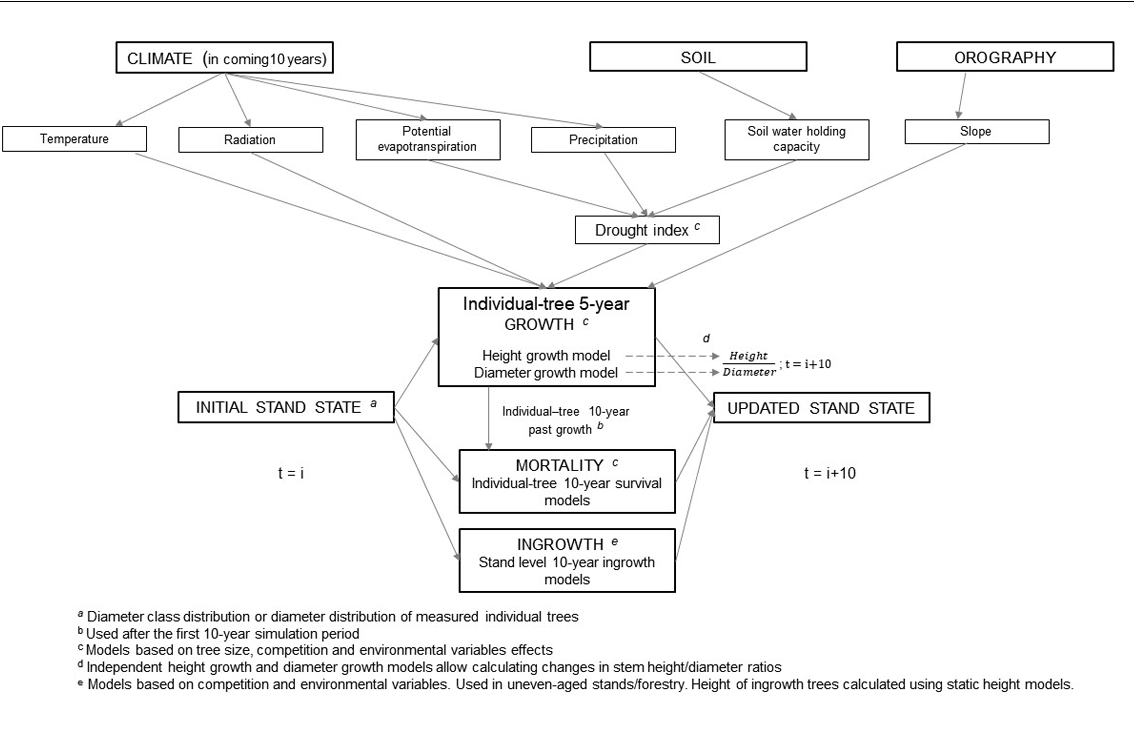
The forest management module makes it possible to specify the levels of target timber (or wood demand) for each forest species at a provincial or national scale. It includes a series of species-level silvicultural prescriptions that are applied at the stand scale according to the stand dominant species. Being based on individual-tree models allows a detailed description of the stand structure and its dynamics, which confers flexibility for simulating all sort of sylvicultural treatments for both even- and uneven-aged stands, and pure and mixed stands. The combination of different timber harvesting levels, variations in the silvicultural prescriptions (such as the rotation period or the mean DBH for final cuts) allow the simulation of possible management alternatives at the local scale.
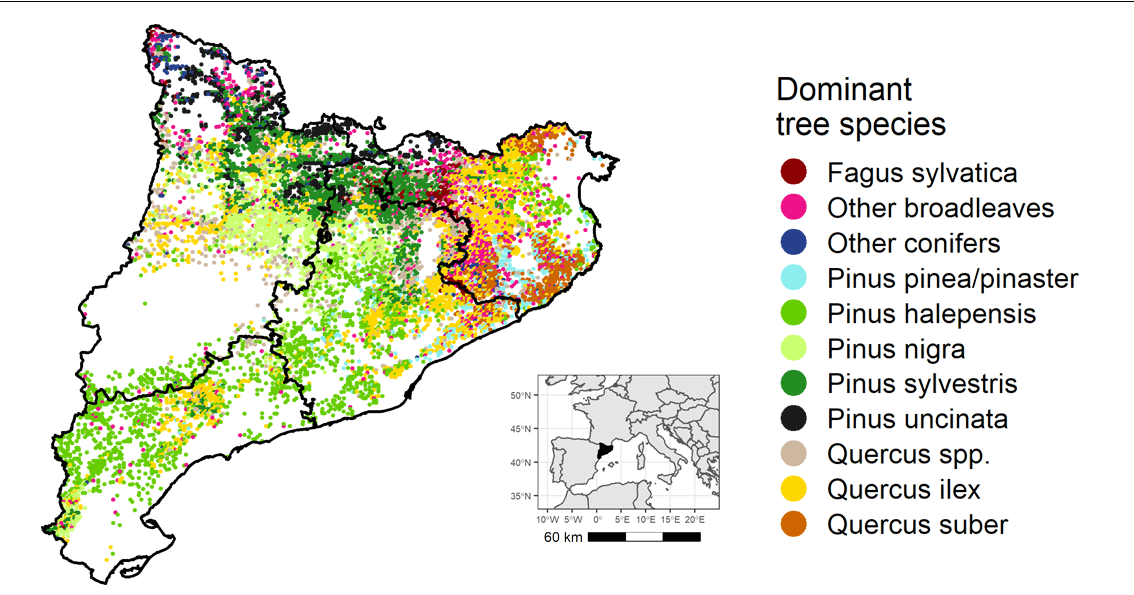
FORMES has been already applied to simulate the provision of multiple forest ecosystem services in Catalonia under changing climatic conditions for two different management alternatives, the Business-As-Usual (BAU) and the Climate-Smart Forestry (CSF). In BAU, the wood demand and usual forestry practices for the period 2015-2020 are assumed unchanged for the rest of the 21st century. It is the benchmark scenario for the current timber market situation. In the CSF, it is planned a progressive increase in the demand for wood and the managed surface coupled with a change in forestry practices aimed at reducing the risk of fire, improving the vitality of the masses, and favoring the obtention of forest products with greater added value and longer lifespan (i.e., wood for construction)
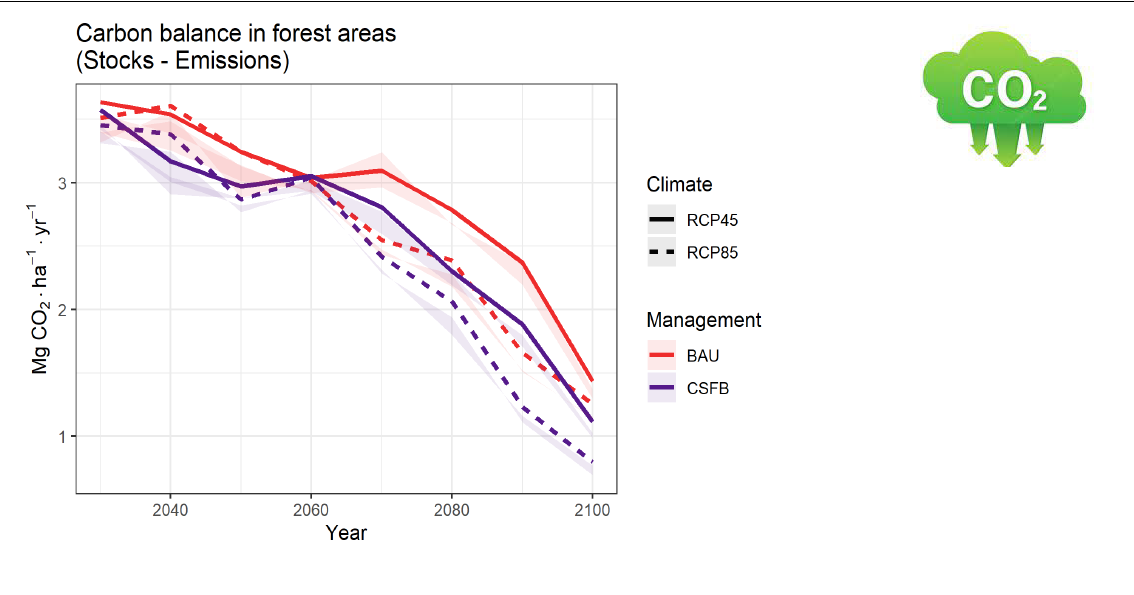
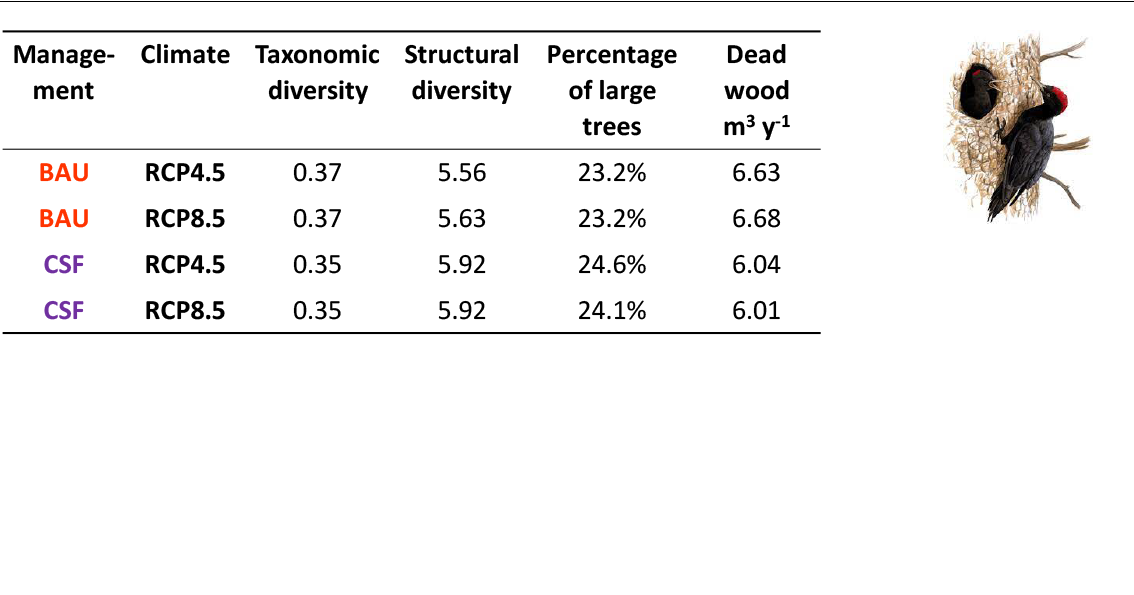
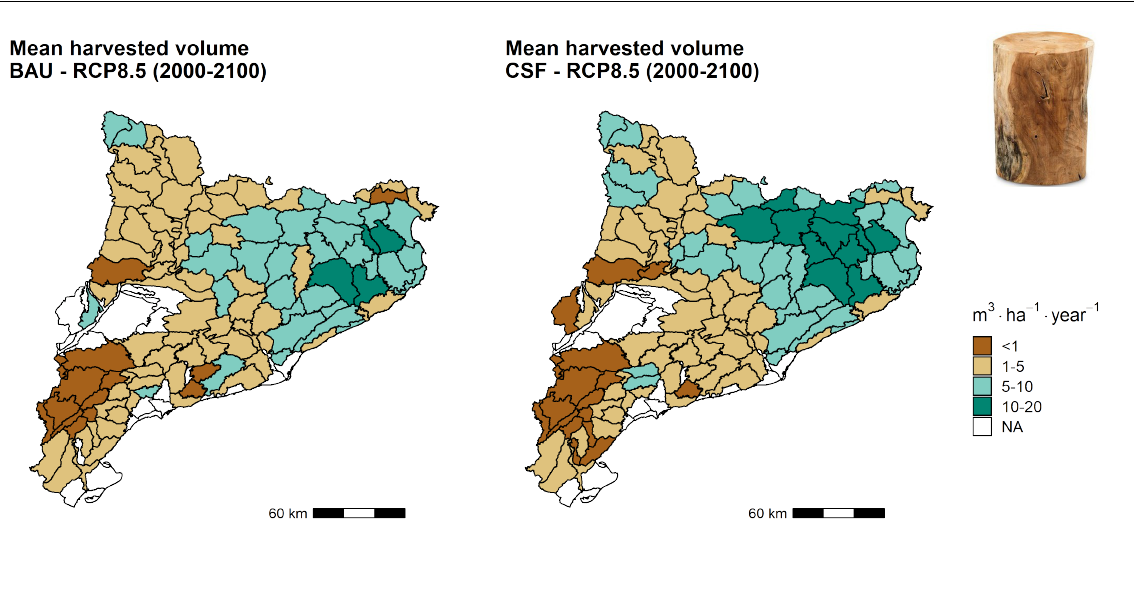
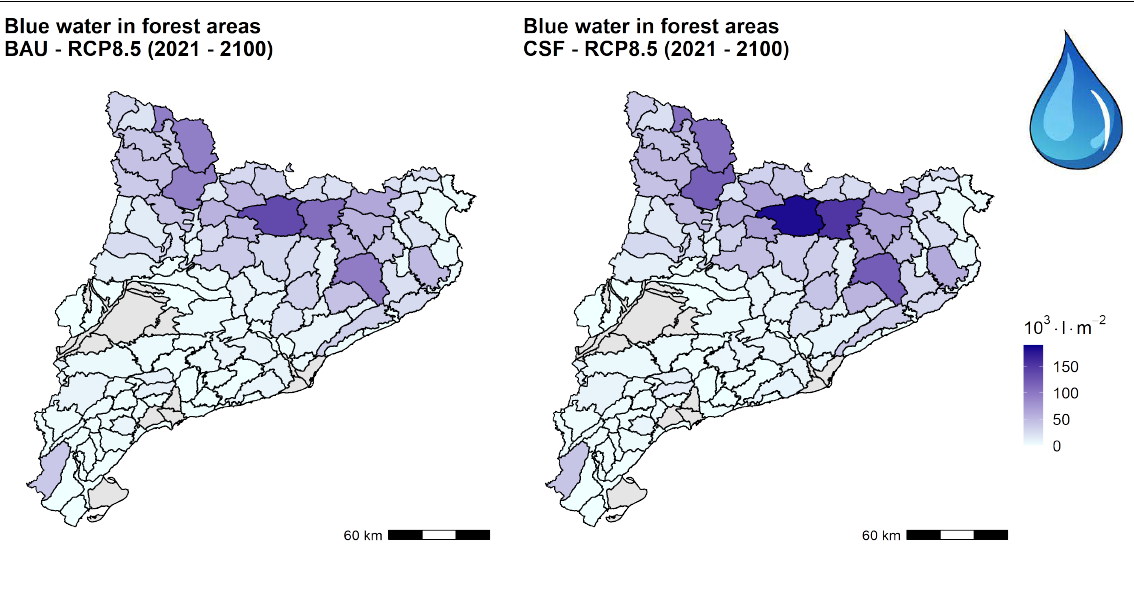
FORMES can be coupled with optimization tools to identify synergies and trade-offs between forest ecosystem services.
See the complete methodological description of the FORMES projection system in Trasobares, A.; Mola-Yudego, B.; Aquilué, N.; González-Olabarria, J. R.; Garcia-Gonzalo, J.; García-Valdés, R.; De Cáceres, M; 2022. Nationwide climate-sensitive models for stand dynamics and forest scenario simulation. Forest Ecology and Management, 505, 119909. https://doi.org/10.1016/j.foreco.2021.119909
See related publications to the FORMES system:
González, J.R., Palahí, M., Trasobares, A., Pukkala, T., 2006. A fire probability model for forest stands in Catalonia (north-east Spain). Ann. For. Sci. 63 (2), 169–176. https://doi.org/10.1051/forest:2005109.
González, J.R., Trasobares, A., Palahí, M., Pukkala, T., 2007. Predicting stand damage and tree survival in burned forests in Catalonia (North-East Spain). Ann. For. Sci. 64 (7), 733–742. https://doi.org/10.1051/forest:2007053.
De Cáceres, M., Martínez-Vilalta, J., Coll, L., Llorens, P., Casals, P., Poyatos, R., ... & Brotons, L. (2015). Coupling a water balance model with forest inventory data to predict drought stress: the role of forest structural changes vs. climate changes. Agricultural and Forest Meteorology, 213, 77-90
Blasco, E., González-Olabarria, J. R., Rodriguéz-Veiga, P., Pukkala, T., Kolehmainen, O., & Palahí, M. (2009). Predicting scenic beauty of forest stands in Catalonia (North-east Spain). Journal of Forestry Research, 20(1), 73-78.
Garcia-Gonzalo, J., Bushenkov, V., McDill, M. E., & Borges, J. G. (2014). A decision support system for assessing trade-offs between ecosystem management goals: An application in Portugal. Forests, 6(1), 65-87.